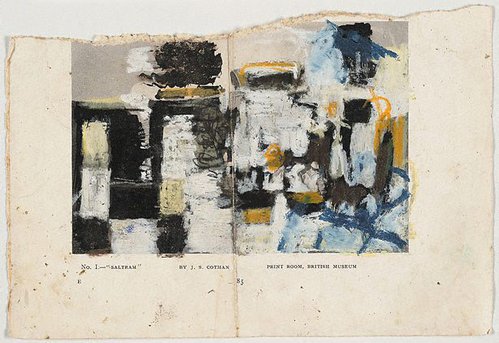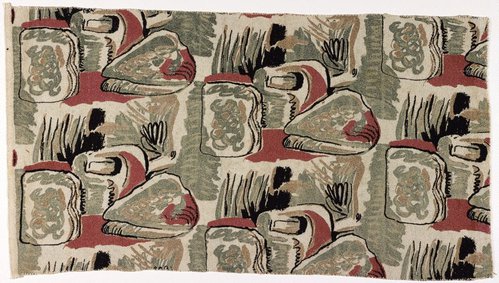-
Details
- Date
- 1963-1964
- Media category
- Painting
- Materials used
- diptych: synthetic polymer paint on canvas
- Dimensions
-
each panel 137.0 x 183.0 cm stretcher; 137.0 x 366.0 cm stretcher overall; 139.7 x 369.0 x 4.0 cm frame overall
:
a - left panel, 137 x 183 cm
b - right panel, 137 x 183 cm
- Signature & date
Signed and dated u.r. corner right panel [part b], black oil "Carl Plate '63-4".
- Credit
- Purchased 1979
- Location
- Not on display
- Accession number
- 135.1979.a-b
- Copyright
- © Estate of Carl Plate
- Artist information
-
Carl Plate
Works in the collection
- Share
-
-
About
Following five years in Europe where he studied under Bernard Meninsky, Carl Plate returned to Sydney in 1940, bringing with him an intimate knowledge of works by contemporary British artists, including Henry Moore, Graham Sutherland, and Barbara Hepworth, and influencing the subsequent direction of his painting.
Plate's work during the 1940s and 1950s moved progressively towards abstraction, and reflected his belief in the Surrealist theory of unconscious creative impulses, the metamorphosis of natural objects and the expression of extra-sensory experience.
'Graph segments' belongs to a group of paintings produced in the early 1960s notable for their large scale and dynamic application of mellow earth colours, and re-affirm his belief in the employment of randomness and chance in art as practiced by Surrealist artists Paul Klee and André Breton.
In an interview with Laurie Thomas in 1968, Plate remarked:
"One is aware of a dimension which is non-visual - but you can’t be too explicit about it - to make something visually which doesn't relate specifically to anything visual but which exists in a timeless area. A thing which has been created as something to look at must somehow incorporate within itself all the concentrated experience which may or may not create a reaction in the person who looks at it. I would like to think that somewhere, somehow, in my pictures is something that people can respond to; but I'm humble enough to wonder whether they can ...".Australian Art Department, Art Gallery of New South Wales, 2001
-
Exhibition history
Shown in 4 exhibitions
Survey 3: recent Sydney painting (1963), Farmer's Blaxland Gallery, Sydney, 05 Jun 1963–14 Jun 1963
Project 22 - Carl Plate: 1909-1977 (1977), Art Gallery of New South Wales, Sydney, 19 Nov 1977–18 Dec 1977
Three years on: acquisitions 1978-81, Art Gallery of New South Wales, Sydney, 15 Oct 1981–01 Dec 1981
Carl Plate: works from the collection, Art Gallery of New South Wales, Sydney, 22 Nov 2006–14 Jan 2007
-
Bibliography
Referenced in 4 publications
-
Sasha Grishin, Australian art: a history, 'John Olsen and the anxious image', pg. 386-397, Carlton, 2013, 393, 394 (colour illus.), 551, 567. plate no. 37.7
-
Barry Pearce, Three years on: a selection of acquisitions 1978-1981, 'Australian Art', pg. 5-26, Sydney, 1981, 6, 20 (illus.). cat.no. 31
-
Laurie Thomas., The Australian, 'Seeing what isn't there', Sydney, 02 Oct 1968, page unknown. A work titled 'Graph segments' is mentioned, Thomas stating that 'this work was included in the Australian exhibition which toured Europe some years ago', and that it 'is one of the finest paintings of the past 20 years'. As the Gallery's 'Graph segments' did not come into the collection until 1979, it is difficult to say with certainty whether the Gallery's painting is the one to which Thomas is refering. A number of works exist from the Segments series. This, however, is an excellent article on the artist and Plate is quoted extensively.
-
Anne Watson., Project 22: Carl Plate 1909-1977, 'The Paintings', Sydney, 1977. cat.no. 20; Collection of Mrs Jocelyn Plate
-




